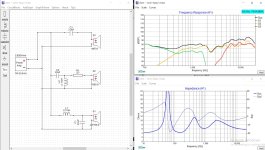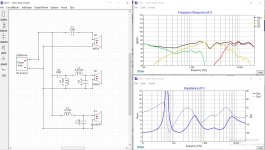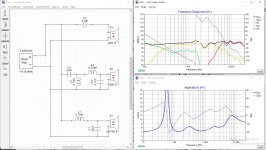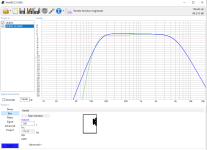What you're describing happened to me exactly. I scrapped multiple designs in the middle of their build stage, realizing how I still had much more to learn before I could create something I'd be happy to put my name on. Each time, having been led astray by well intentioned content creators. My experience has been that the more I learn, the more I realize how much I still don't know. As of today, I've designed 2 speakers. Both of them are fine, and use cheap components as they were both built as learning experiences.@Bryguy There are just too many self proclaimed YT experts out there spreading inaccurate and misleading info. They may have good intentions, but they end up steering people in the wrong direction based on their ignorance. Once you buy the parts and think you'll just "do what he did", you're stuck with the results of a bad design which is hard to correct. The crossover is the most underestimated thing and often the most expensive. Correcting that requires virtually all new parts if the drivers chosen aren't easy to work with (the cheaper ones often aren't).
I'd like to think that at this point I am approaching the threshold of competent, but my crossover development skills in particular still need honing. I sometimes wonder how everyone else learns?
Aw, sorry ! Simili is for simili-cuir, aka simili-leather : imitation of leather.


T


T
Nice! I like that look. Is it very difficult to apply?Aw, sorry ! Simili is for simili-cuir, aka simili-leather : imitation of leather.
Nice! I like that look. Is it very difficult to apply?
No : easy - assuming you have the tools and the skills, of course. 😉
I use a harmless neoprene water-solvented glue, with a 45mn time of pre-drying / working
Work flat on a table, with a very even layer of glue put with a soft nylon brush (just like if you were painting an horizontal surface)
The little 2-Ways is English Green, the large 3-Ways is Dark Grey :
T
hello everyone,
I am definitely a newb, so i want to share my design and ask for some advice ( any) before i start the build. have a vision for a stereo 3-way bookshelf. I need your help determining if the specs of these components are a good fit, espeasely in the electrical sens, can they all operate together?
The easiest way to find out is simulate it in XSIM. There are lots of simulators, this one is free and easy for XO work, and can it import the ZMA and FRD files provided by Dayton. It does not have modelling for room, baffle step, CC spacing, diffraction, or directivity but it will do axial freq response.
This took <5min to find out. The P95 has a nasty dip at 2.2Khz, the midrange filter has no HF cutoff so it's active along with the tweeter at HF. There is a bass sag due to sensitivity differences. Not good, but maybe fixable. The XSIM files and driver files are zipped.
Attachments
Last edited:
V2 : Fixing the midrange upper cutoff. Replace the resistor (R1=4R7) with an inductor (L3) and solder a cap (C4) from the inductor to gnd. It may be possible to boost the LF by placing the speaker against a wall or corner.
Attachments
1.6L = 0.056Why not ? What is the neat volume of the midrange cabinet ?
T
these are the same box size, green is ported
Attachments
- Home
- Loudspeakers
- Multi-Way
- a 3 way bookshelf design



